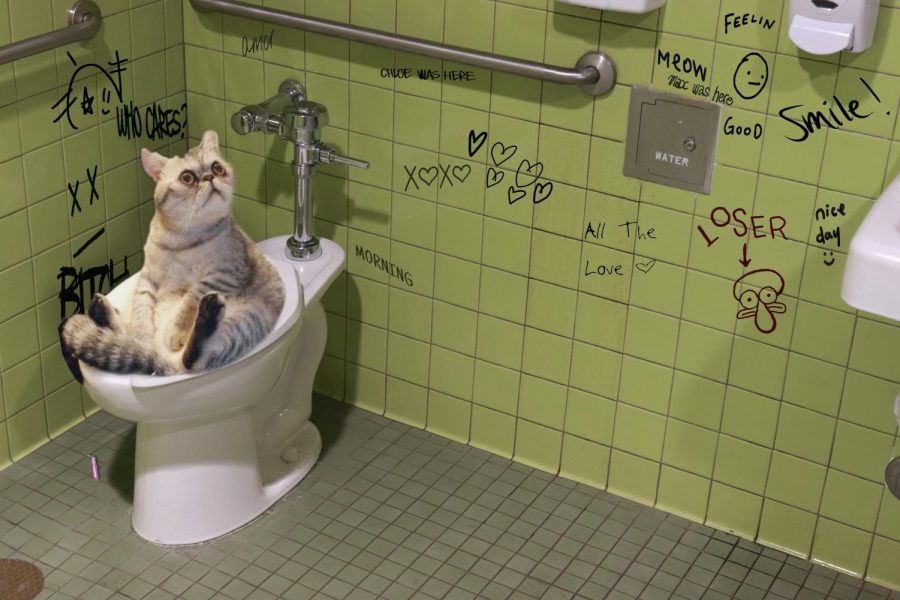Why Flushing Cat Poop Down Your Toilet Isn't a Good Idea - Advice for Proper Handling
Why Flushing Cat Poop Down Your Toilet Isn't a Good Idea - Advice for Proper Handling
Blog Article
Do you find yourself looking for suggestions on Don’t flush cat feces down the toilet?

Introduction
As feline proprietors, it's necessary to bear in mind just how we deal with our feline close friends' waste. While it might seem convenient to flush feline poop down the bathroom, this method can have destructive effects for both the environment and human health and wellness.
Ecological Impact
Flushing feline poop presents unsafe virus and bloodsuckers right into the water system, presenting a significant risk to aquatic communities. These impurities can negatively impact aquatic life and compromise water high quality.
Health Risks
Along with ecological issues, flushing cat waste can additionally position health dangers to people. Pet cat feces might have Toxoplasma gondii, a bloodsucker that can create toxoplasmosis-- a potentially severe disease, specifically for expecting women and individuals with weakened immune systems.
Alternatives to Flushing
The good news is, there are safer and more responsible ways to throw away pet cat poop. Take into consideration the complying with options:
1. Scoop and Dispose in Trash
One of the most usual technique of dealing with pet cat poop is to scoop it into a naturally degradable bag and toss it in the trash. Make sure to make use of a dedicated trash inside story and take care of the waste quickly.
2. Use Biodegradable Litter
Select eco-friendly pet cat clutter made from products such as corn or wheat. These litters are environmentally friendly and can be safely dealt with in the garbage.
3. Bury in the Yard
If you have a backyard, think about hiding cat waste in a designated location far from veggie yards and water sources. Make sure to dig deep sufficient to avoid contamination of groundwater.
4. Mount a Pet Waste Disposal System
Purchase a pet waste disposal system especially made for feline waste. These systems utilize enzymes to break down the waste, minimizing smell and ecological influence.
Verdict
Liable pet possession expands past providing food and shelter-- it additionally involves appropriate waste monitoring. By refraining from flushing pet cat poop down the commode and choosing alternate disposal approaches, we can minimize our environmental footprint and safeguard human health and wellness.
Why Can’t I Flush Cat Poop?
It Spreads a Parasite
Cats are frequently infected with a parasite called toxoplasma gondii. The parasite causes an infection called toxoplasmosis. It is usually harmless to cats. The parasite only uses cat poop as a host for its eggs. Otherwise, the cat’s immune system usually keeps the infection at low enough levels to maintain its own health. But it does not stop the develop of eggs. These eggs are tiny and surprisingly tough. They may survive for a year before they begin to grow. But that’s the problem.
Our wastewater system is not designed to deal with toxoplasmosis eggs. Instead, most eggs will flush from your toilet into sewers and wastewater management plants. After the sewage is treated for many other harmful things in it, it is typically released into local rivers, lakes, or oceans. Here, the toxoplasmosis eggs can find new hosts, including starfish, crabs, otters, and many other wildlife. For many, this is a significant risk to their health. Toxoplasmosis can also end up infecting water sources that are important for agriculture, which means our deer, pigs, and sheep can get infected too.
Is There Risk to Humans?
There can be a risk to human life from flushing cat poop down the toilet. If you do so, the parasites from your cat’s poop can end up in shellfish, game animals, or livestock. If this meat is then served raw or undercooked, the people who eat it can get sick.
In fact, according to the CDC, 40 million people in the United States are infected with toxoplasma gondii. They get it from exposure to infected seafood, or from some kind of cat poop contamination, like drinking from a stream that is contaminated or touching anything that has come into contact with cat poop. That includes just cleaning a cat litter box.
Most people who get infected with these parasites will not develop any symptoms. However, for pregnant women or for those with compromised immune systems, the parasite can cause severe health problems.
How to Handle Cat Poop
The best way to handle cat poop is actually to clean the box more often. The eggs that the parasite sheds will not become active until one to five days after the cat poops. That means that if you clean daily, you’re much less likely to come into direct contact with infectious eggs.
That said, always dispose of cat poop in the garbage and not down the toilet. Wash your hands before and after you clean the litter box, and bring the bag of poop right outside to your garbage bins.
https://trenchlesssolutionsusa.com/why-cant-i-flush-cat-poop/

Do you really like reading up on How to Dispose of Cat Poop and Litter Without Plastic Bags? Try leaving a review down below. We would be delighted to hear your ideas about this content. We are looking forward that you visit us again soon. Sharing is good. Helping others is fun. I praise you for your time. Visit us again soon.
Further Details Report this page